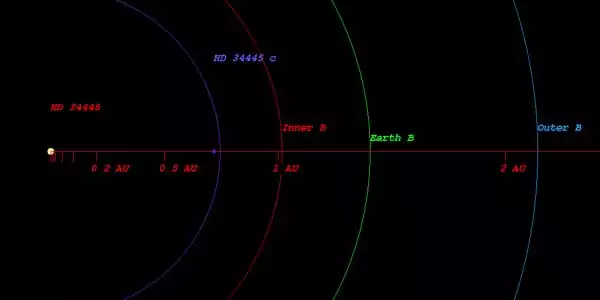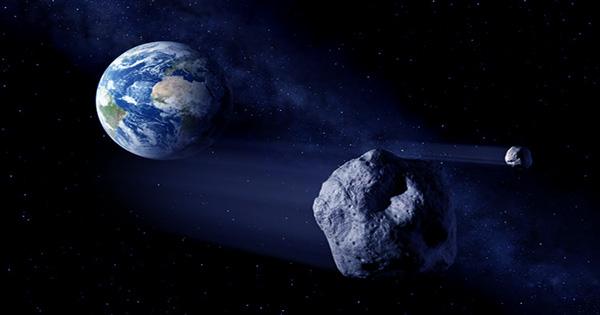HD 34445 c is a gas giant exoplanet in the habitable zone of a G-type star. HD 34445 c has a radius of 8.420 times that of Earth. HD 34445 c, with a mass of more than 50 Earth masses, is a gas giant, a planet whose mass is mostly made up of hydrogen and helium, similar to Jupiter and Saturn in our solar system. It has a mass of 0.168 Jupiters, takes 214.7 days to complete one orbit around its star, and is 0.7181 AU away from it.
It was discovered in 2017 and was announced. It was discovered in 2017-11 by the Multiple Observatories observatory using the radial velocity method. It is an extrasolar planet (exoplanet) that orbits the star HD 34445 in the Orion constellation. A planet that orbits a star other than the Sun is known as an exoplanet. According to the most recent parallax records, the star is 151.56 light-years or 46.47 parsecs from Earth.
Its semi-major axis is 0.72 astronomical units, whereas Earth’s is 1 astronomical unit. The planet’s orbital period, or year, is 214.67 days, or 0.59 Earth years. By the end of a full year, the Earth will have completed 1.70 orbits around its star. The mass of HD 34445 c is 53.424 times the mass of Earth.

HD 34445 c is an exoplanet that orbits the star HD 34445, which is located approximately 151.7 light-years (46.5 pc) from our Solar System. Its discovery was made public in 2017. HD 34445 has an apparent magnitude of 7.3 and an absolute magnitude of 4.0. It is 1.1 times more massive and 1.4 times larger than our Sun. The surface temperature is 5836 degrees Celsius, and the spectral type is G0V. The extrasolar planet HD 34445 c orbits the star HD 34445 every 214.7 days at an orbital distance of 0.72 AU in this planetary system.
Howard et al. were the first to report that HD 34445 was home to a planet. Their combined data set of 68 precision radial velocities (RVs) measured over 12 years with the Keck Observatory’s HIRES spectrometer and 50 RVs measured over 6 years with the HRS spectrometer on the McDonald Observatory Hobby–Eberly Telescope (HET) yielded a 1049-day planet with a mildly eccentric (e = 0.27) orbit. Howard et al. also reported a second possible planet candidate signal at 117 days with a minimum mass of 52 M⊕, but this required a significant number of additional measurements to confirm and rule out other possible periods.
















